This article highlights some essential ABA (Applied Behavior Analysis) abbreviations that every parent should be familiar with to support their child's therapy effectively. Understanding terms like "reinforcement" and "prompting" can truly empower caregivers. It’s all about being actively involved in your child's treatment, which can lead to improved outcomes through informed participation and collaboration with therapists. Let’s explore this together!
Understanding the language of Applied Behavior Analysis (ABA) can feel like deciphering a complex code, especially for parents navigating their child's therapy journey. But don’t worry! By familiarizing themselves with essential ABA abbreviations and terminology, caregivers can significantly enhance their involvement and advocacy, ultimately leading to better outcomes for their children.
However, what happens when the very terms meant to empower create confusion instead? 🤔 This article explores ten crucial ABA abbreviations every parent should know, illuminating how these concepts can transform their approach to supporting their child's development. Let’s explore this together!
At Rori Care, we really believe in the importance of helping caregivers understand essential ABA abbreviations and terminology. When caregivers grasp key concepts like 'reinforcement' and 'prompting,' they can actively join in their child's therapy journey. This knowledge not only sheds light on how behaviors are shaped through ABA abbreviations but also empowers caregivers to effectively reinforce learning at home. 🌟
Research tells us that when caregivers are well-versed in ABA concepts, they can make a significant difference in their child's treatment outcomes. For example, when parents get involved in data collection, it can boost the effectiveness of interventions, leading to better behavioral progress. By embracing ABA abbreviations, parents can advocate more effectively for their child's needs, creating a collaborative environment that nurtures their development and independence. Let’s explore this together and see how we can support each other on this journey!
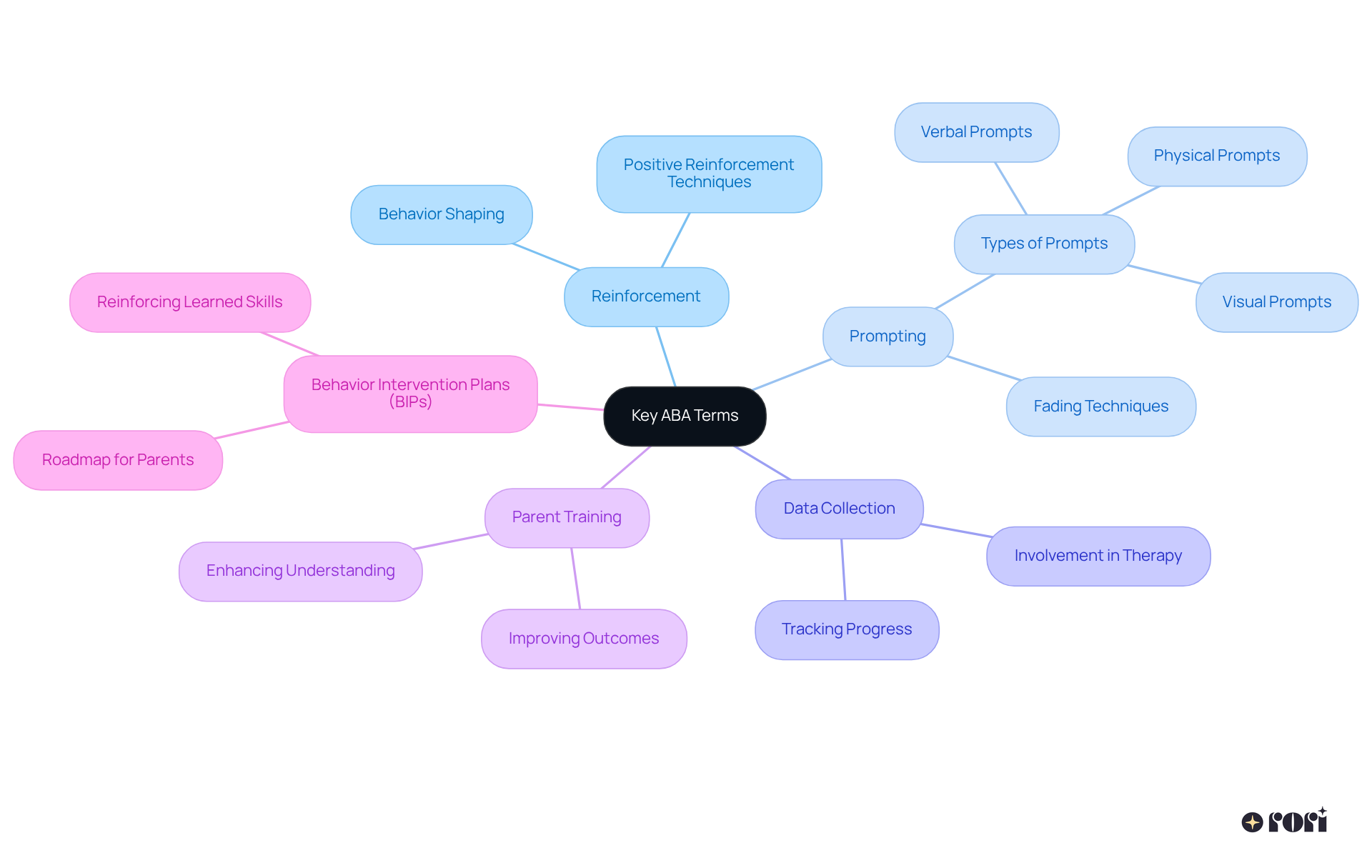
Applied Behavior Analysis (ABA) is a scientifically validated method that focuses on understanding and enhancing specific actions. It’s actually the only form of autism treatment that insurance covers! At Rori Care, we believe in personalized planning, which means each behavioral plan is custom-designed to fit your child's unique needs, strengths, challenges, and goals.
But ABA isn’t just about changing behaviors; it’s about teaching skills that help children become more independent and improve their quality of life. We set clear, measurable goals for behavior change and skill enhancement, giving you a transparent way to see progress. Our qualified behavior analysts use evidence-based strategies rooted in the latest research, ensuring that we apply the most effective methods for behavior change.
We’re committed to ongoing evaluation and modification. This means we continuously monitor your child’s progress and how they respond to the intervention, making adjustments as needed to optimize outcomes. Let’s explore this journey together! We’re here to help you every step of the way!
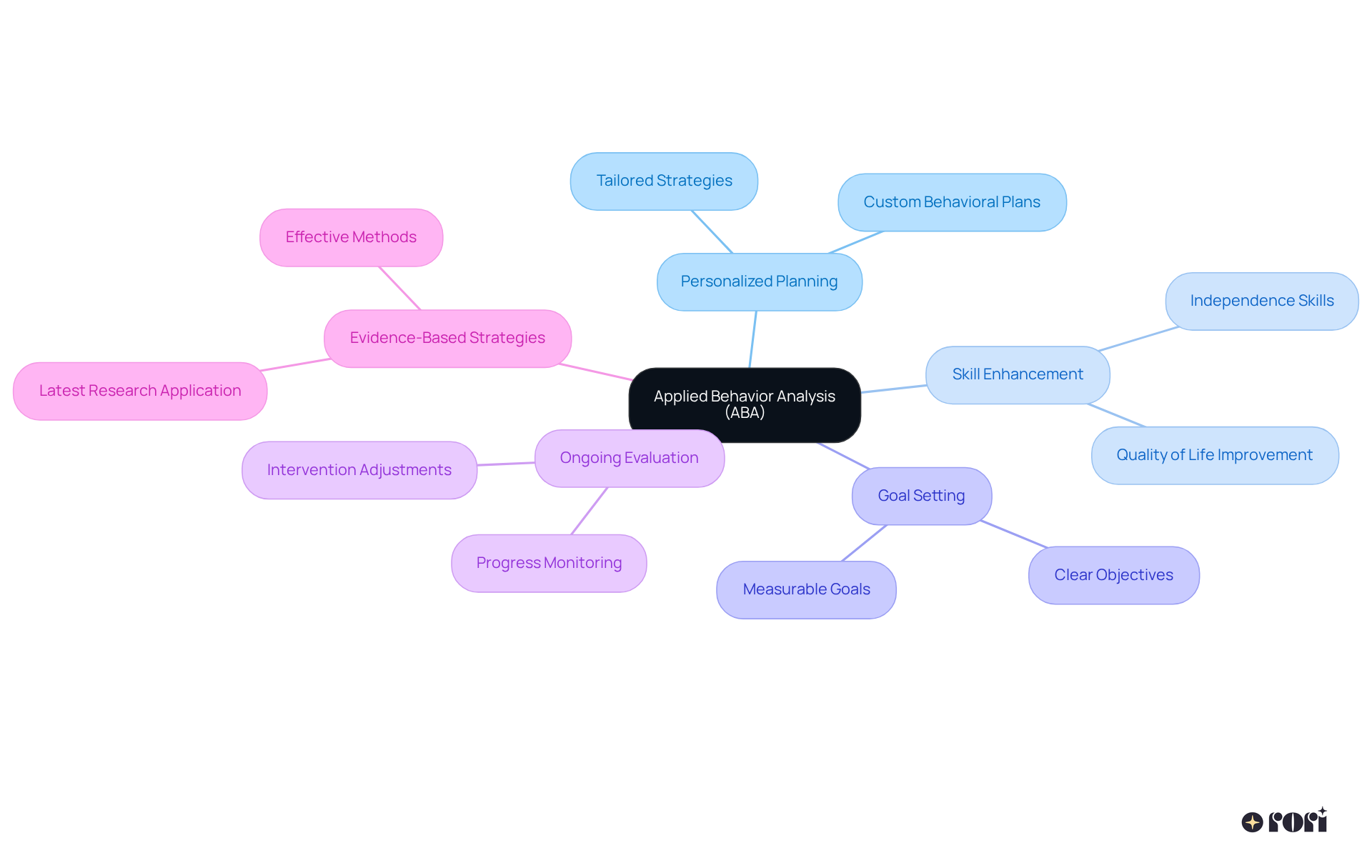
A Board Certified Behavior Analyst (BCBA) is a highly trained professional specializing in Applied Behavior Analysis (ABA) at Rori Care. They’re here to design and manage customized treatment plans tailored to each individual’s unique needs, making sure therapy is both effective and personalized. By conducting thorough assessments, BCBAs identify specific challenges and strengths, which significantly boosts therapy success rates. They utilize data-driven strategies to track progress and make essential modifications, empowering caregivers to actively engage in their child’s development.
BCBAs play a crucial role in supporting caregivers throughout the ABA therapy journey by helping them understand ABA abbreviations. They offer practical advice on executing strategies at home, helping caregivers understand their child’s behavior and development. This partnership creates a nurturing atmosphere where parents feel encouraged to ask questions and seek clarification about their child’s progress, aligning perfectly with Rori Care’s commitment to caregiver education and support.
The impact of BCBA-led treatment plans on youth development is truly remarkable. By focusing on measurable results and evidence-based methods, BCBAs help children enhance their social skills, communication, and overall behavior. Their expertise ensures that each child’s therapy journey is optimized for success, paving the way for greater independence and a better quality of life. In summary, BCBAs are essential partners in the autism treatment journey, using ABA abbreviations to bridge the gap between clinical expertise and family involvement. Prompt identification and action are key, and BCBAs play a vital role in delivering timely support to individuals with autism. As Dr. Stephen Shore wisely states, 'If you’ve met one person with autism, you’ve met one person with autism,' highlighting the individualized approach that BCBAs embrace in their work. Rori Care’s comprehensive services, backed by our dedicated clinical leadership team, ensure that families receive the highest level of care and support throughout this journey. Let’s explore this together!
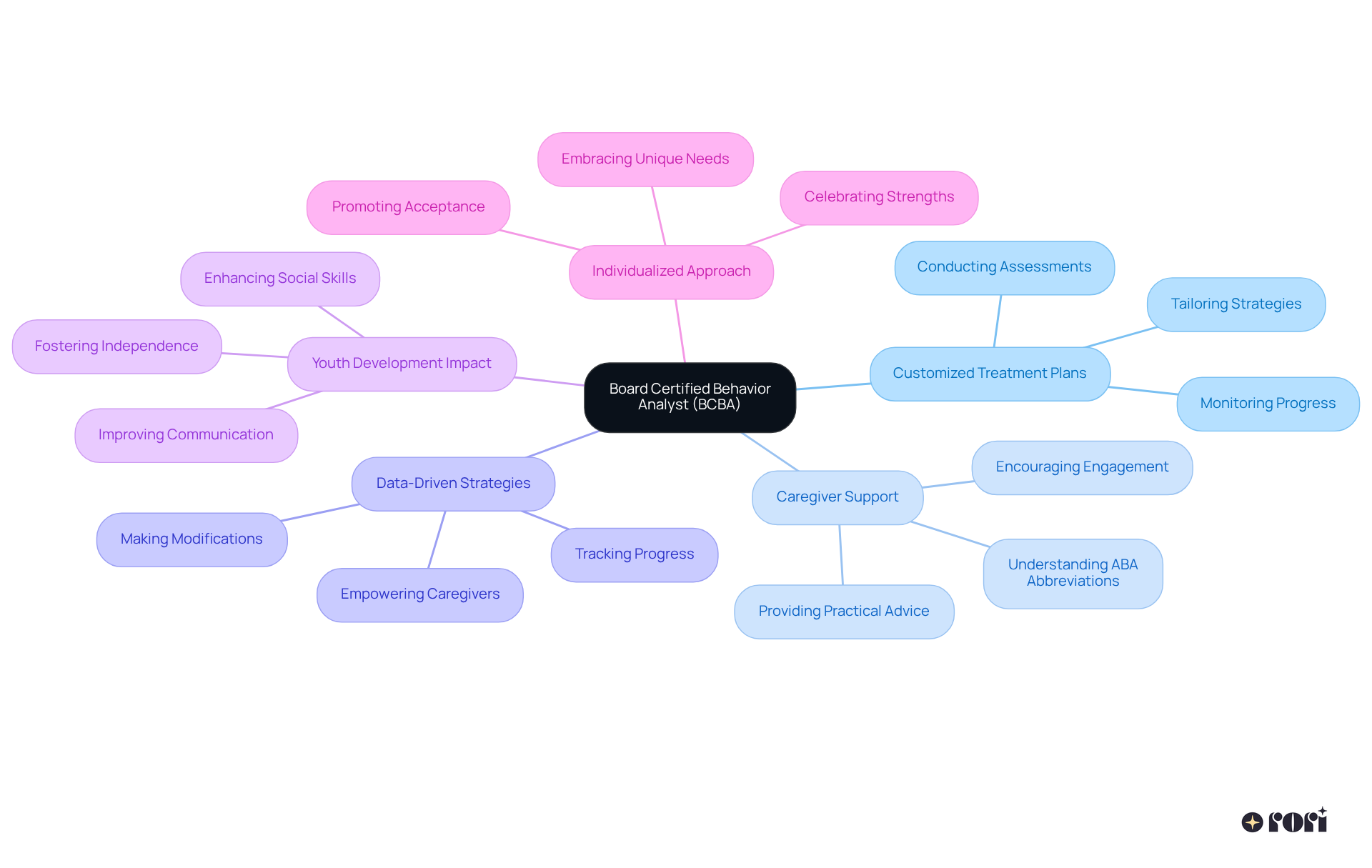
In Applied Behavior Analysis (ABA), aba abbreviations refer to the antecedent, which is the event or condition that occurs before an action takes place. Understanding these antecedents is really important for figuring out why a young person behaves the way they do. For instance, if a child seems upset during transitions between activities, recognizing this precursor can help parents and therapists come up with strategies that make those transitions smoother and lessen any negative behaviors.
ABA specialists emphasize that identifying these triggers is key for effective behavior modification. It allows for proactive interventions tailored to each child’s unique needs. By looking at antecedents, caregivers can use helpful strategies like visual schedules or gradual transitions, which can significantly improve a child’s behavioral responses and emotional well-being.
When caregivers are engaged and knowledgeable about ABA abbreviations, they can make informed decisions that truly benefit their child’s progress. As B.F. Skinner wisely noted, "Behavior is lawful; that is, its occurrence is systematically influenced by environmental events." Parents are encouraged to keep a close eye on their child’s behavior and think about how different antecedents might be influencing their actions. This awareness allows for more effective and personalized strategies to manage behavior.
This active involvement not only empowers caregivers but also promotes consistency in applying therapeutic strategies at home. Let’s explore this together! With a little understanding and the right tools, we can make a positive difference in our children’s lives.
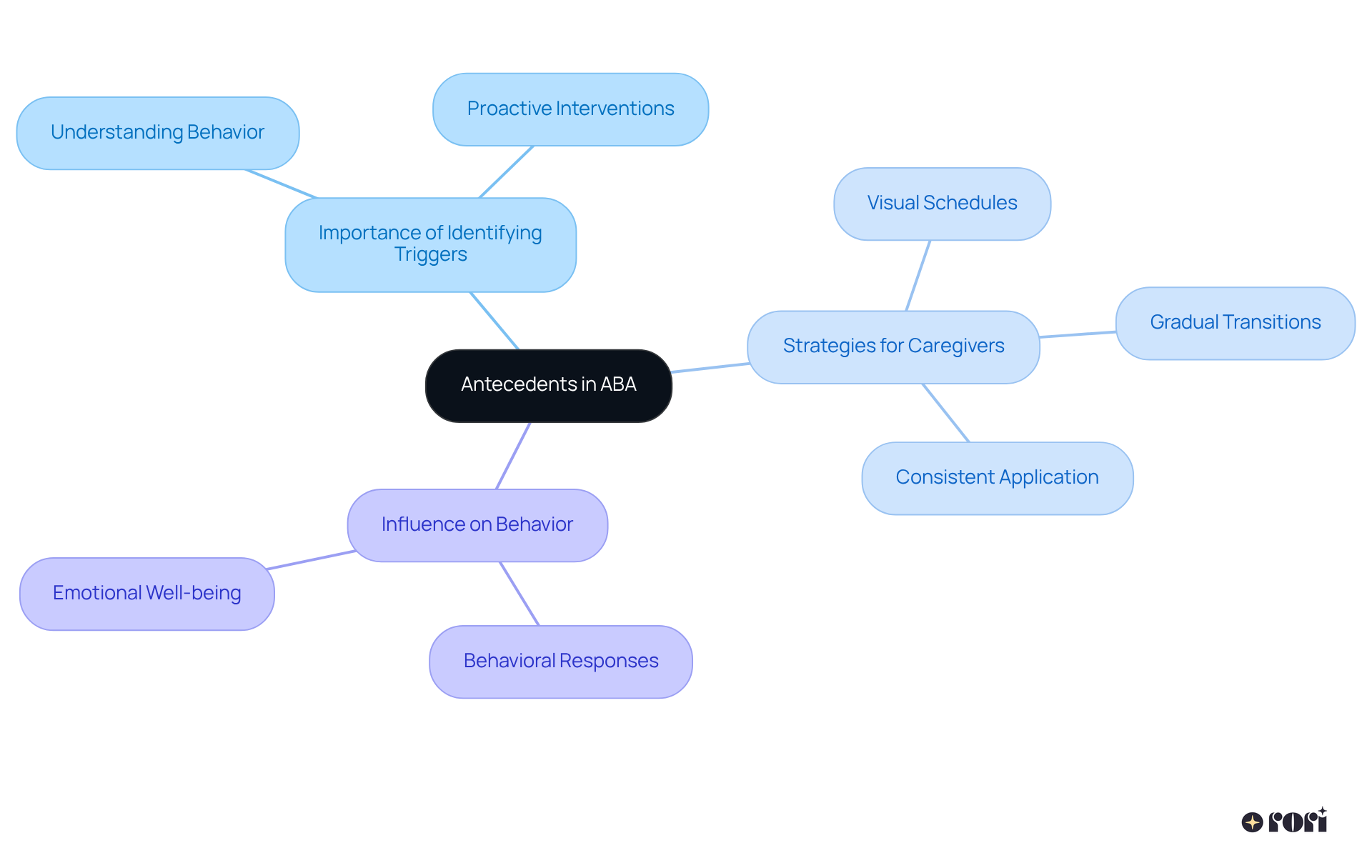
Reinforcement is such a key technique for changing behaviors! It helps increase the chances of getting those desired responses by offering rewards after certain actions. There are two main types of reinforcement:
For example, when a young person finishes their homework and gets a compliment or a small reward, they’re more likely to do it again next time.
Parents have a fantastic opportunity to use positive reinforcement at home to encourage good behaviors. Simple techniques like verbal praise, fun rewards like stickers, or even organized systems like sticker charts can really motivate kids. When you quickly acknowledge their positive actions, it strengthens the connection between what they did and the reward, creating a warm and supportive learning environment.
By using evidence-based strategies, caregivers can tailor reinforcement methods to fit their child’s unique needs and strengths. Setting clear, measurable goals for behavior change allows parents to track progress and adjust their reinforcement strategies as needed. Experts highlight how important positive reinforcement is compared to negative reinforcement when it comes to shaping youth behavior. Not only does positive reinforcement promote good behavior, but it also boosts self-esteem and emotional well-being. Research shows that kids raised in supportive environments, where positive reinforcement is a regular part of life, tend to have better emotional regulation and resilience.
Focusing on specific praise and customizing rewards based on what excites each child can help parents create a nurturing space that supports their child’s growth and independence. Plus, equipping caregivers with knowledge about ABA abbreviations, along with principles and strategies, can lead to better decision-making and improved behavioral outcomes. Incorporating the Four C's of Positive Parenting—Choices, Consequences, Consistency, and Compassion—can further enhance that nurturing atmosphere. Quick feedback is essential in this journey; it helps kids connect their actions with praise, reinforcing those preferred behaviors. Regularly reviewing and adjusting reinforcement strategies ensures they remain effective and aligned with the child’s changing needs. Let’s explore this together!
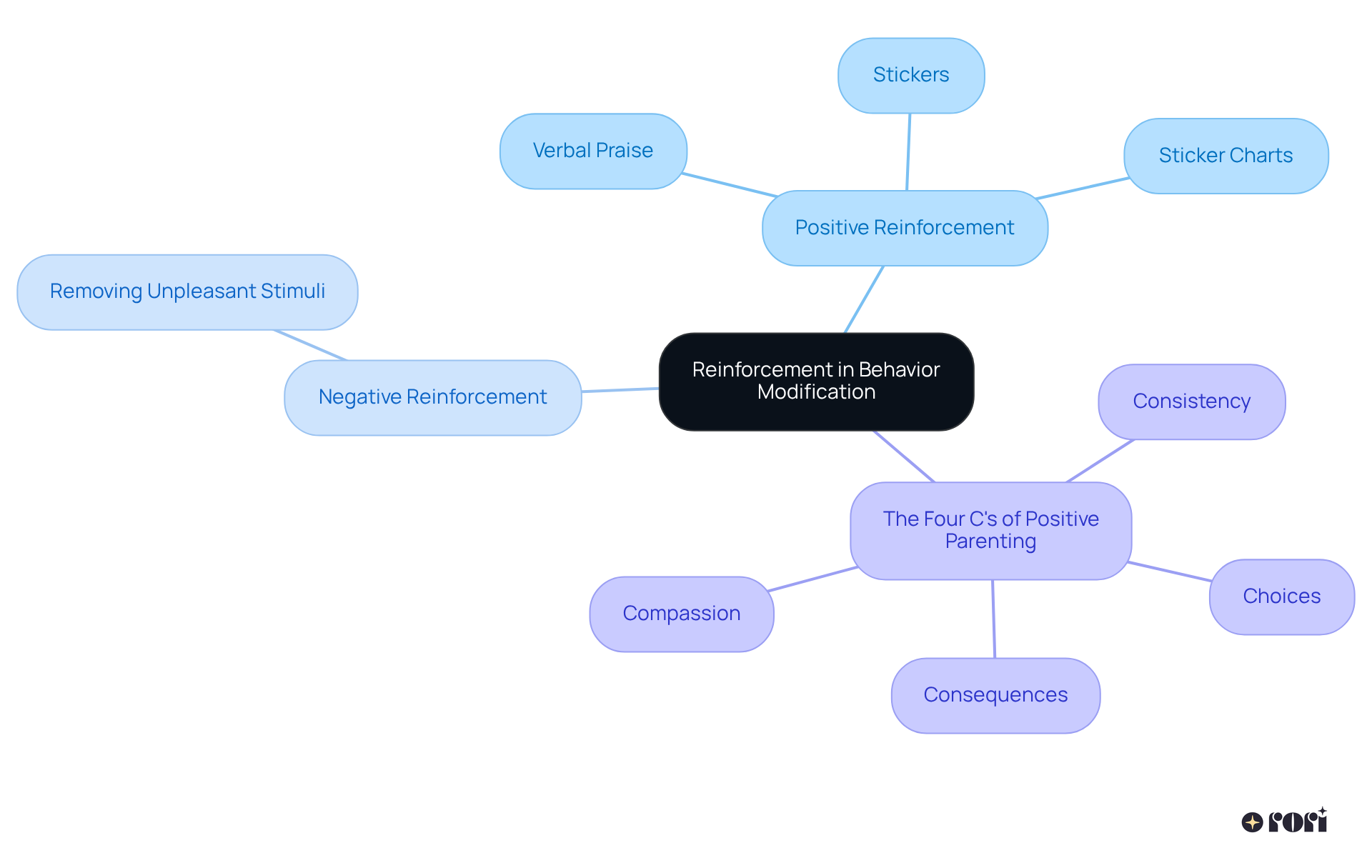
Functional analysis is a systematic method used to evaluate a young person's actions, aiming to uncover its underlying purpose or function. By figuring out whether an action serves as a form of communication, a way to escape a situation, or a response to sensory input, therapists can develop targeted interventions that really address specific needs.
But here’s the thing: this process isn’t just up to therapists alone! It thrives on collaboration, bringing in valuable insights from both therapists and families. This teamwork ensures that interventions are not only effective but also tailored to the unique circumstances of each individual, boosting the overall success of modification strategies.
Understanding the function of behaviors is super important. It helps in crafting interventions that are both humane and effective, ultimately promoting positive behavioral changes. So, let’s explore this together! We’re here to help you every step of the way!
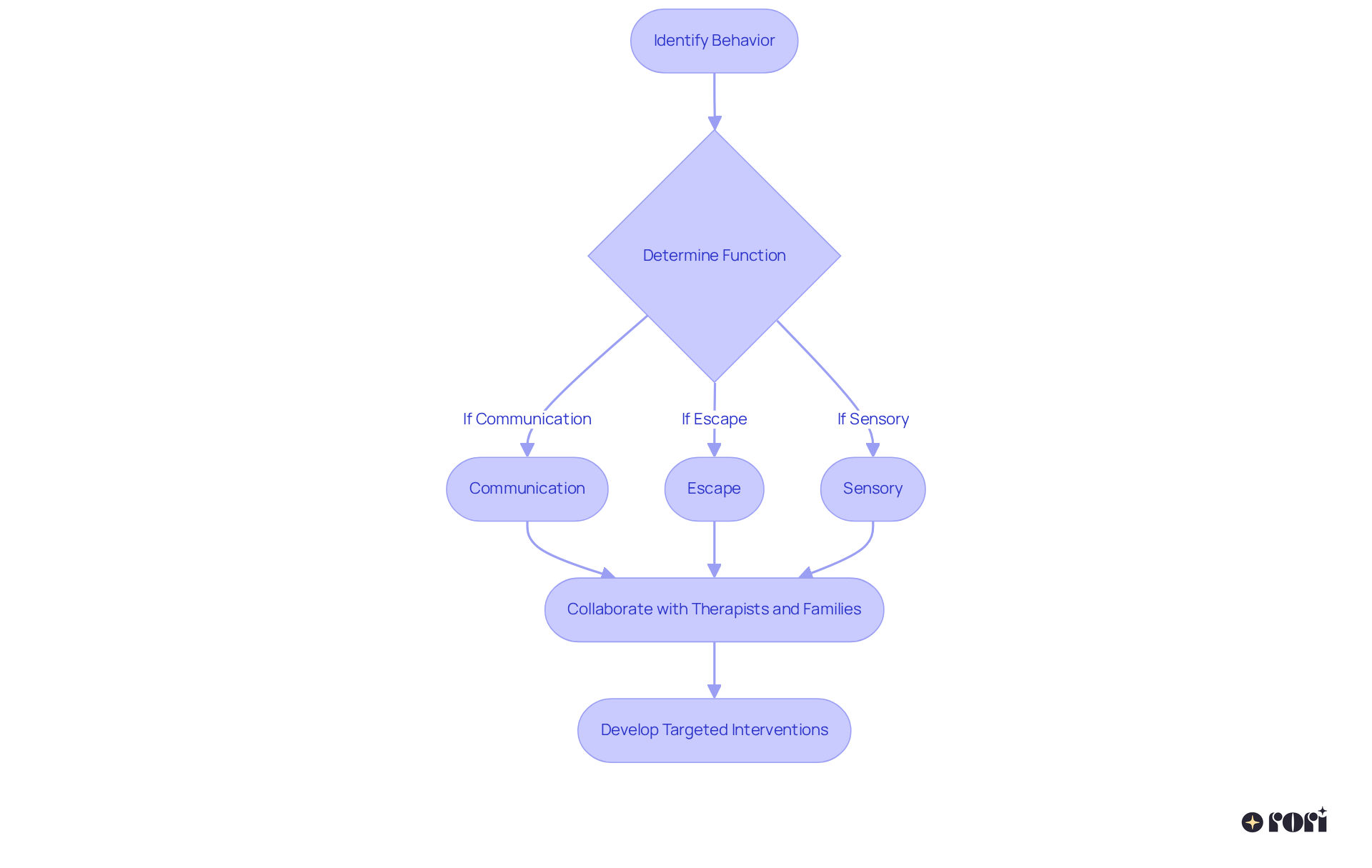
Generalization is all about taking the skills learned in therapy and using them in different situations. For example, if a young person learns to greet their peers during therapy, it’s super important that they can also do this at school or during social gatherings. This is especially crucial for kids with Autism Spectrum Disorders, ADHD, Social Communication Disorders, and Anxiety Disorders, as they often find social interactions challenging.
Parents can really help with generalization by practicing these skills in various environments and encouraging their children to use them in everyday interactions. Plus, when parents are informed about ABA abbreviations, principles, and strategies, they can provide even better support at home, working alongside professional interventions to create consistency. This active involvement not only improves behavioral outcomes but also empowers parents, reducing stress and enhancing overall family dynamics.
Let’s explore this together! By fostering these skills, you’re not just helping your child; you’re also creating a more connected and supportive family environment. We’re here to help you every step of the way!
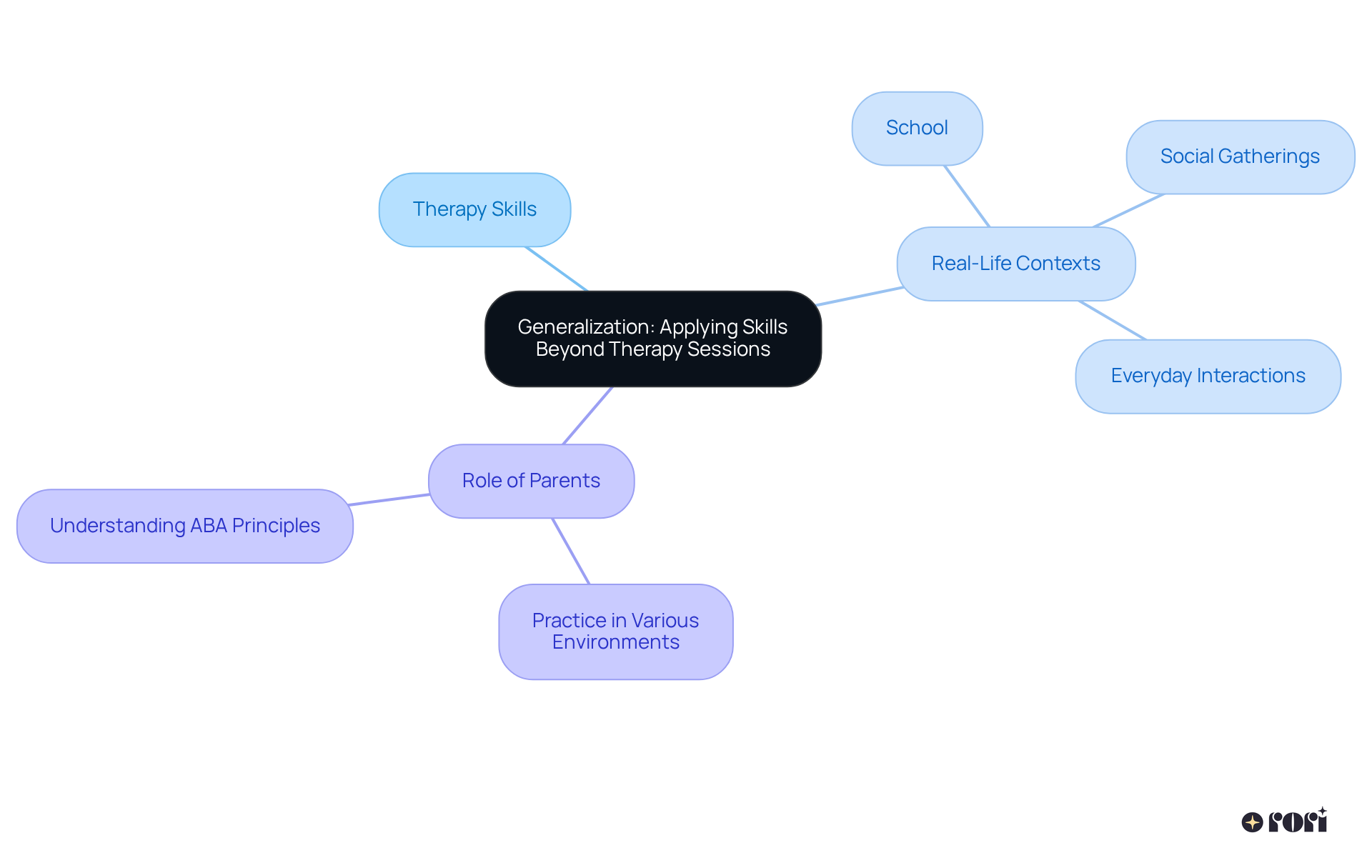
Task analysis is all about breaking down a complex skill into smaller, manageable steps, which is super important for effective learning in young learners. For example, when teaching a little one to brush their teeth, you can divide it into steps like:
By focusing on one step at a time, kids can learn more efficiently and build confidence in their abilities.
Parents play a crucial role in this journey by reinforcing each step as their child masters it. This active participation not only supports their education but also aligns beautifully with the principles represented by ABA abbreviations. ABA emphasizes the importance of caregiver engagement in achieving meaningful progress, as reflected in ABA abbreviations. Plus, the conduct care engine updates intervention and skill acquisition plans after each session based on what’s been achieved, ensuring treatment plans are always improving based on progress report data.
With the right strategies and a little data collection, caregivers can create a consistent and supportive environment that maximizes the impact of interventions. Let’s explore this together! We're here to help you every step of the way!
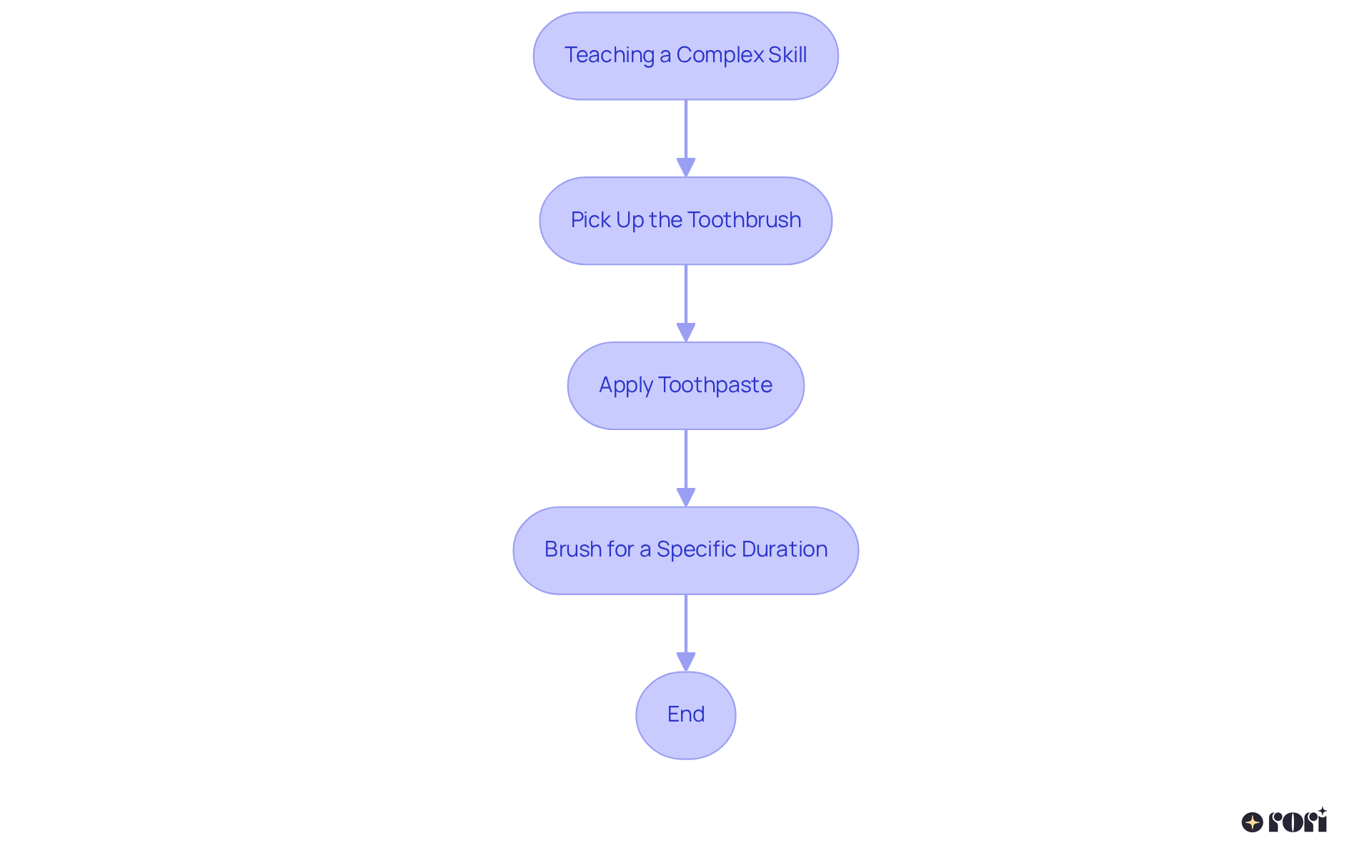
Prompting is all about offering cues or hints to encourage your little one to engage in desired behaviors. It’s a key part of the ABA abbreviations within Applied Behavior Analysis, tailored to fit each child's unique needs. There are various types of prompts—like verbal, visual, and physical prompts. For example, if your child is learning to say 'hello,' you might use a verbal prompt by asking, 'What do you say when you see someone?' As your child grows more independent, you can gradually fade these prompts.
This process is grounded in the principles of aba abbreviations, which equip you with the knowledge and skills to align strategies and gather data effectively. By actively participating in your child’s learning journey, you can create a consistent and supportive environment that boosts the effectiveness of the intervention. Remember, using prompting can greatly support your child's learning in different contexts. It highlights the importance of early intensive behavioral intervention (EIBI) in enhancing learning, verbal, and social skills for children with autism. Let’s explore this together!
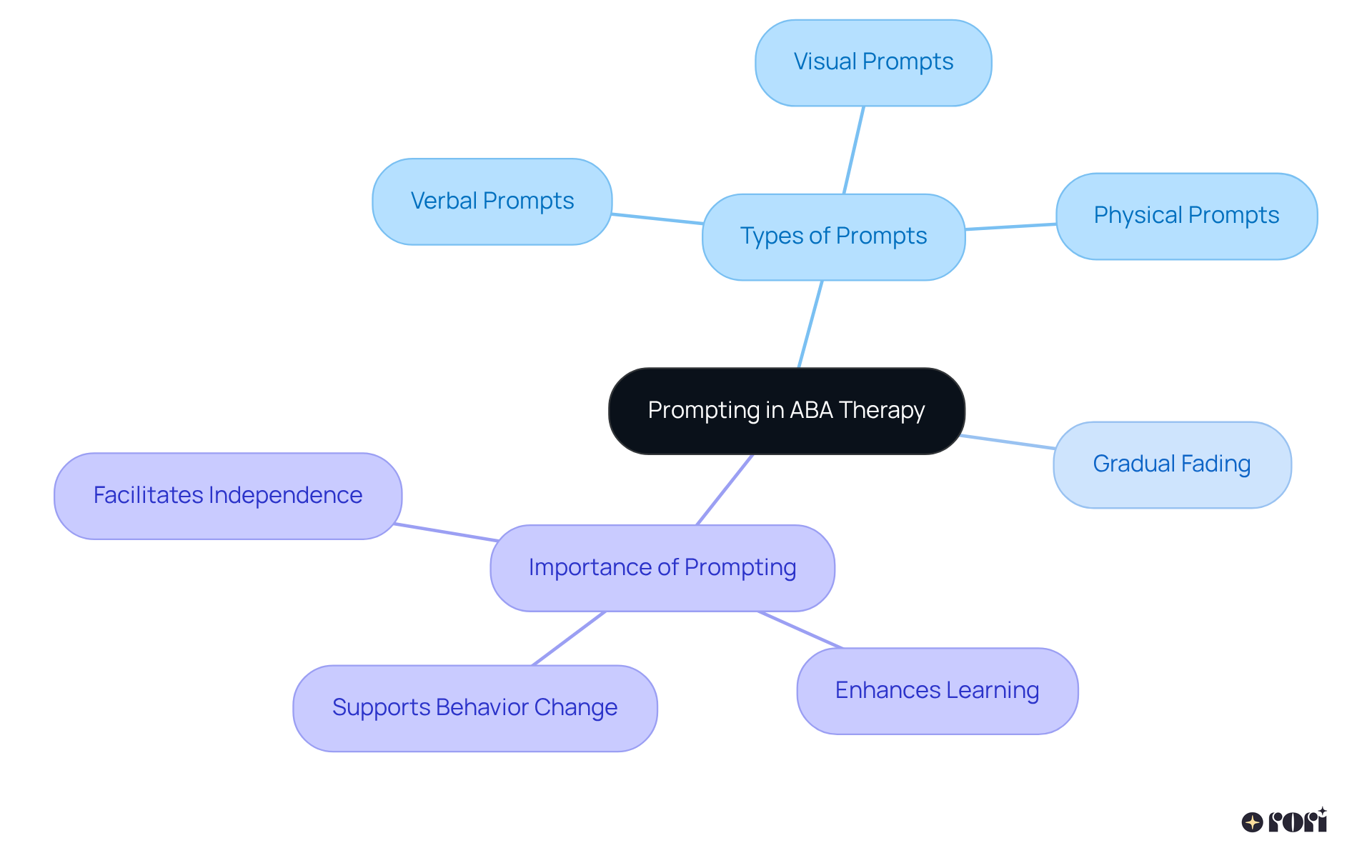
Data-driven decision-making is so important in ABA therapy! It involves systematically collecting and analyzing information about a young person's progress. This approach helps therapists identify effective strategies and make necessary adjustments to treatment plans. Involving families in this process is key; by monitoring their child's behaviors and sharing observations with their Board Certified Behavior Analyst (BCBA), families provide valuable insights that make therapy more adaptable to the child's evolving needs. This teamwork not only creates a more personalized treatment experience but also empowers parents to actively participate in their child's development.
Research shows that effective data monitoring can significantly improve autism treatment results. In fact, advancements have been observed in 90% of youth when suggested hours are thoroughly executed with active caregiver participation. Continuous monitoring allows clinicians to spot behavioral patterns, leading to timely changes in intervention strategies. BCBAs stress the importance of reliable data for making informed decisions, as inconsistent data can hinder accurate assessments and necessary adjustments. By using standardized data collection methods—like frequency/event recording, duration recording, and ABC data tracking—therapists can ensure that interventions are tailored to each child's unique needs.
Successful data tracking examples include cases where visual analysis tools, such as graphs and charts, have been used to illustrate behavioral trends. These visual aids not only help clinicians assess progress but also make it easier to communicate with families, ensuring everyone is on the same page regarding treatment goals. Ultimately, integrating data-driven decision-making in ABA therapy, which utilizes ABA abbreviations to center around the child and adapt to their needs, leads to more effective interventions and better outcomes for children with autism. Let’s explore this together and see how we can make a difference!
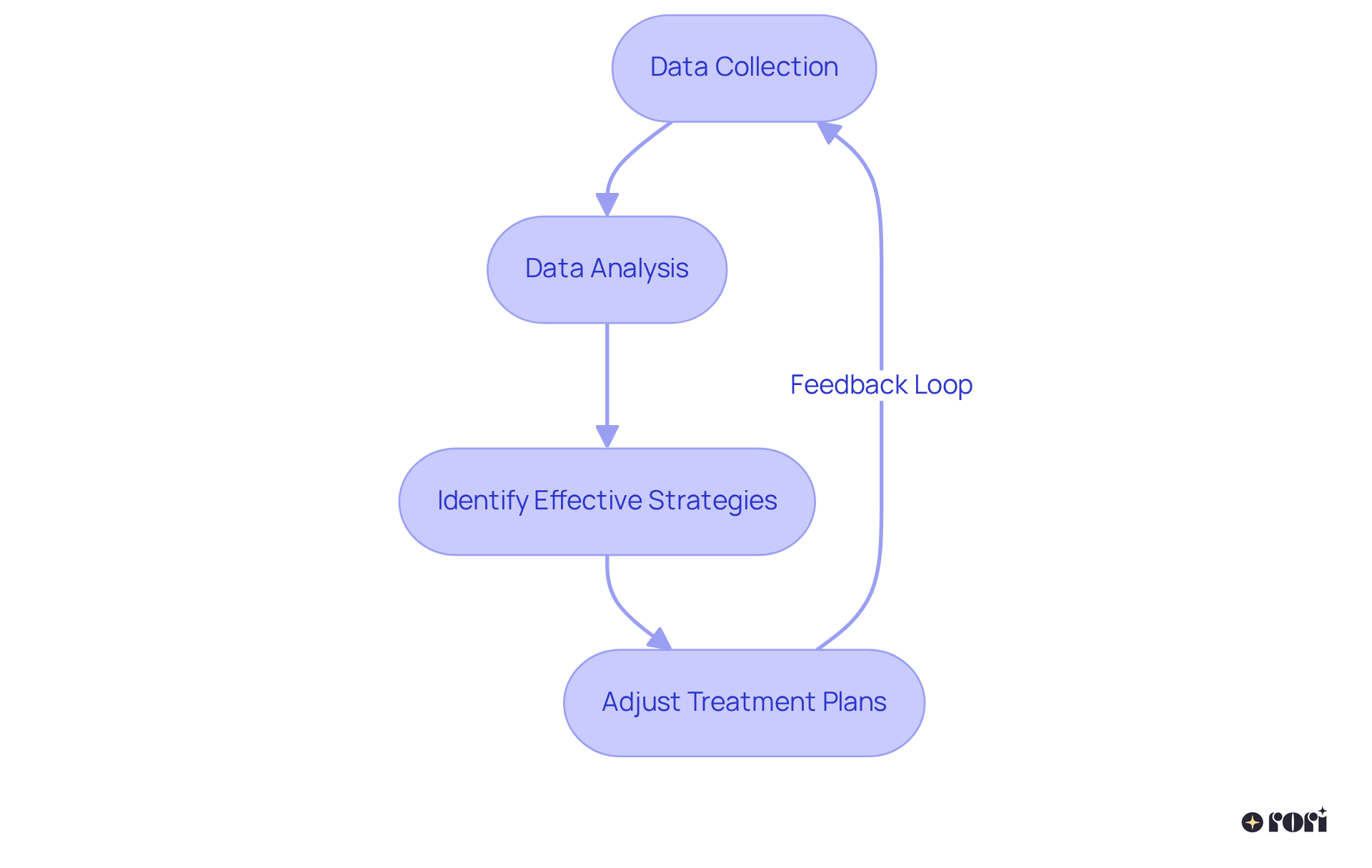
Understanding essential ABA abbreviations and terminology is so important for parents on their child's therapy journey! By getting familiar with these key concepts, caregivers can really dive in and actively participate in the therapeutic process. This not only empowers parents but also boosts the effectiveness of interventions, leading to better outcomes for their little ones.
Throughout the article, we explored important ABA terms like reinforcement, prompting, and functional analysis. These concepts play a big role in effective behavior modification and skill development. We also highlighted the expertise of Board Certified Behavior Analysts (BCBAs) and how they create personalized treatment plans tailored to each child's unique needs. By engaging with these principles, parents can better support their child's learning and advocate for their needs, ensuring a collaborative approach to therapy.
In conclusion, embracing the language of ABA and being an active participant in the therapy process can truly make a difference for children with autism and other developmental challenges. We encourage parents to keep exploring these essential terms and strategies, creating a nurturing environment that supports their child's growth and independence. By doing this, they not only enhance their child's development but also foster a more connected and informed family dynamic. Remember, the journey of understanding ABA is a shared one, and together, we can make significant progress! Let’s explore this together!
What is the importance of understanding ABA terminology for caregivers?
Understanding ABA terminology, such as 'reinforcement' and 'prompting,' allows caregivers to actively participate in their child's therapy journey, reinforcing learning at home and improving treatment outcomes.
How does caregiver involvement affect a child's treatment outcomes in ABA therapy?
When caregivers are involved, particularly in data collection, it can enhance the effectiveness of interventions and lead to better behavioral progress for the child.
What is Applied Behavior Analysis (ABA)?
ABA is a scientifically validated method focused on understanding and enhancing specific actions, and it is the only form of autism treatment covered by insurance.
How does Rori Care personalize ABA therapy for children?
Rori Care custom-designs behavioral plans to fit each child's unique needs, strengths, challenges, and goals, ensuring a personalized approach to therapy.
What are the goals of ABA therapy?
The goals of ABA therapy include changing behaviors, teaching skills for independence, and improving the overall quality of life for children.
What role does a Board Certified Behavior Analyst (BCBA) play in ABA therapy?
A BCBA designs and manages customized treatment plans, conducts assessments, tracks progress, and empowers caregivers to engage in their child's development.
How do BCBAs support caregivers during the therapy process?
BCBAs help caregivers understand ABA terminology, offer practical advice for implementing strategies at home, and create a supportive environment for questions and clarifications.
What impact do BCBA-led treatment plans have on children?
BCBA-led treatment plans significantly enhance children's social skills, communication, and overall behavior, promoting greater independence and a better quality of life.
Why is the individualized approach important in ABA therapy?
The individualized approach acknowledges that each child with autism is unique, allowing for tailored interventions that meet specific needs, as emphasized by the quote from Dr. Stephen Shore.